|
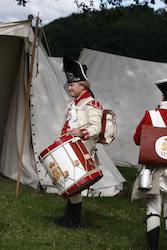
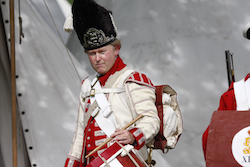
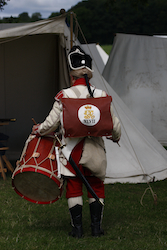
The 47th Foot
Raised in 1741 using various Colonels names until 1751 then being designated
47th Foot. Its first service came in 1745 when the Jacobite Rebellion
broke out. They were stationed at Edinburgh at the time, eight companies were
assembled at Stirling with the 13th Dragoons, 44th & 46th
Foot. They were part of a 1400 strong force which too part in the Battle of
Prestonpans. The two companies left at Edinburgh Castle saw action in the
defence of the Castle & the City.
Its first service outside England came in 1748 when they sailed for Ireland,
then in 1750 to Nova Scotia Canada. Where in 1758 it was part of a force under
General Wolfe which captured the French Garrison of Louisburg. During the siege
the French lost over 1000 men, the Regiment had 9 killed, 30 wounded.
The following year the Regiment took part in the overthrown of the French
power in Canada when General Wolfe made his attack on Quebec on 13th
September 1759. At 2 o’clock in the morning the troops on board the boats sailed
down the St.Lawrence River. After climbing the cliffs they formed up on the
ground known as "The Plains of Abraham". The Regiment being right centre of the
line between Artillery & the 43rd Regiment. At 9 o’clock the French
started forming their line. General Wolfe sent an order for all troops to load
an additional ball in their muskets. When the British fired their first volley
the French line appeared a shattered wreck, after a further volley the British
charged and the battle was won.
The Regiment remained there until 1762 when it went back to Ireland until
1773 when it was ordered to America. They landed and were quartered in the state
of New Jersey, moving to Boston the following year. Service in the following two
years involved skirmishing & various attacks cam to a head at the "Battle of
Bunker Hill" on the 17th June 1775. After winning the battle they
were stationed at Charlestown. Their service continued until the British
surrender at Saratoga in the summer of 1778 when they returned to Canada after
which in 1781 they returned to England.
The British Line Infantry of this period were made up of a Regiment of about
450 man. The main part of the Regiment was its 8 "Battalion" Companies with a
"Grenadier" and "Light" Company as their "Flank" Companies. During the A.W.I.
the Regiment’s Grenadier & Light Companies were banded together in Battalion
strength and served as independent bodies.
The dress of a Soldier of the Battalion Company consisted of a cocked hat
three cornered, edged with white tape around. A Regimental cost of red cloth
lined with white, reaching below the knee. It had a fall down collar, round
cuffs, lapels to the waist. All in the facing colour of the Regiment (47th
Foot white). Buttonholes were bound around with lace of a Regimental pattern.
They had a waistcoat under the cost & wore breeches. But on service wore black
gaiters with white linen tops to protect the breeches from becoming soiled.
Their equipment consisted of a black leather cartridge pouch, a bayonet both
suspended from white shoulder belts of which one has a metal plate on it with
the Regiment’s number or badge. A linen haversack & waterbottle of metal or wood
were also carried in the hip. The Soldiers firearm was the ‘Brown Bess’ (short
land service new pattern) Musket. A flintlock weapon of 0.75 calibre, weighed
approximately 10 pounds. Drummers & Fifers were the pride of the Regiment, how
they were dressed, Officers made it their business to see that their Musicians
were well furnished in attractive uniform.
It was the practice to dress then in "reverse" colours, ie. What the facing
colour was of the Regiment, was used for the colour of the coat, with the cuff &
collar being red. With lace shoulder "wings", reverse chevrons running up the
sleeve & additional lace on the back cost seams. Their caps were back bearskin
(like those of Grenadiers) with a special front plate with trophies of colours &
drums with the Royal Crest device on it. The back o the caps would bear the
Regiments number or badge . Drummers & Fifers carried a short Scimitar bladed
sword.
information provided by D.P.&G Publications
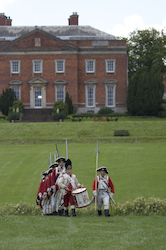
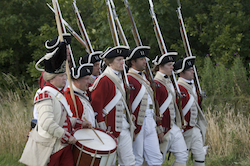
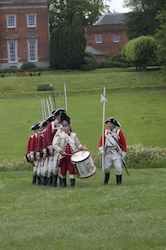
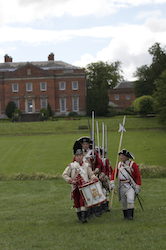
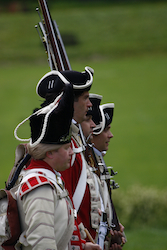
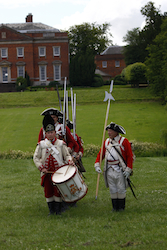
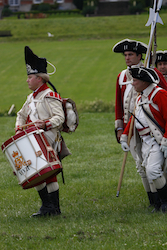
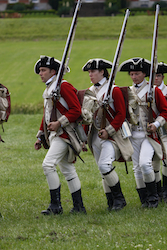
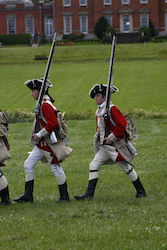
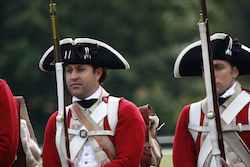
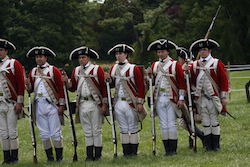
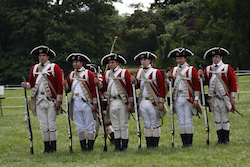
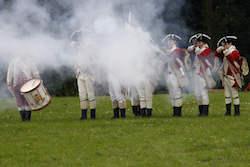
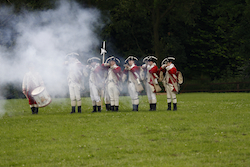
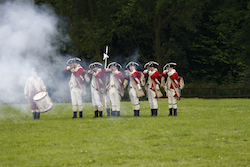
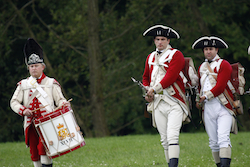
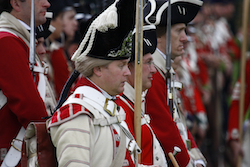
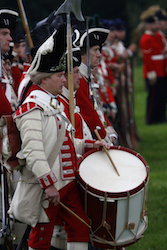
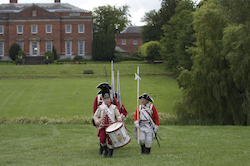
visit DP&G Publications site to purchase
books >>
|